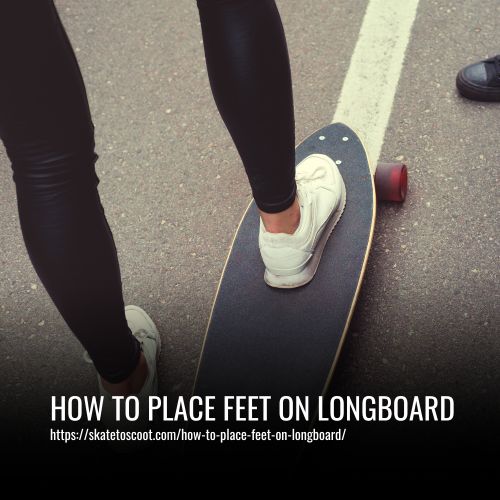As an Amazon Associate we earn from qualifying purchases.
Driving up steep hills can be challenging for longboarders due to the need for endurance and proper techniques to prevent slipping. The two most popular methods for pushing uphill are slogging uphill and switching to pushing uphill.
These techniques allow longboarders to maintain control and momentum while tackling inclines. However, it is important for longboarders to practice and develop the necessary skills to navigate steep hills safely and effectively.

How to do Longboard Uphill?
Longboarding uphill requires a combination of techniques depending on the type of hill, your skills, and goals. The three main approaches are pushing, pumping, and walking.
Pushing uphill requires good stamina and slogging techniques to distribute the effort across your body. This is a skill that fitness longboarders work on and develop. It’s the best option for beginners.
Uphill pumping is both an art form and a physical skill. It requires a strong physical ability, but it also provides an intense full-body workout. This technique involves powerful pumps with your rear foot to generate momentum and maintain speed uphill.
Walking with your longboard is another option, although it may not be as spectacular as the other techniques. It can be effective in certain situations, especially when the hill is too steep to push or pump.
Techniques of Uphill Longboarding
Pushing uphill and pumping are the two main techniques used in longboarding to tackle uphill terrains. Each technique has its own advantages and is suited for different situations. Here’s a breakdown of each technique:
1. Pushing Uphill:
- Pushing uphill is the most natural approach for many longboarders.
- It’s similar to kicking or pushing your longboard on flat ground but with an incline involved.
- This technique is suitable for shorter inclines or milder hills.
- It provides a great workout but may be less efficient in terms of speed and effort.
- Pushing uphill requires good stamina and endurance to maintain a steady pace.
2. Pumping Uphill:
- Pumping uphill is an effective technique that creates stable momentum for longboarding uphill.
- It involves putting more weight on the front trucks of your board and doing shorter, faster, and more forceful rotations with specific body motions.
- Uphill pumping is easier on flatter surfaces compared to steeper inclines.
- The challenge lies in finding the right balance between pump power and frequency.
- This technique requires practice and technique to maintain speed and momentum while going uphill.
Both pushing and pumping uphill provide an intense full-body workout. However, the choice between the two techniques depends on the gradient of the hill and your personal preferences.
In addition to these techniques, alternate pushing with both feet (skogging) and switch pushing (changing your stance) are advanced techniques that distribute the effort across different muscles and help build strength and endurance. These techniques require practice and can be used for longboarding uphill on long inclines.
Why longboard uphill?
Longboarding uphill serves several purposes depending on your specific goals. Firstly, if you encounter inclines on your commuting route, going uphill allows you to navigate the incline section in between flatland and downhill areas. This ensures a smooth and uninterrupted journey.
Secondly, if you enjoy freeride longboarding, you may frequently ride down long, winding roads where you can carve and slide. However, once you reach the bottom, you’ll likely want to go back up for more exhilarating runs. Longboarding uphill in this scenario allows you to easily return to the top and continue your freeriding adventures.
Lastly, long-distance pushing is another reason to longboard uphill. For individuals interested in longboard fitness or distance traveling, selecting a route with a long, upward incline helps build endurance and strengthens pushing muscles. This type of fitness longboarding, often referred to as “skogging” (skating and jogging), provides an intense full-body workout, engaging core muscles and offering a challenging cardio exercise.
History of Longboarding uphill and Uses
Longboarding uphill has become a popular sport among people of all ages. It originated in the 1950s when surfers in Hawaii created small versions of surfboards with wheels to mimic the feeling of surfing on land. However, longboarding did not gain significant popularity until the 1990s when Sector 9 began mass producing and selling longboards. This made longboarding more stable and accessible to a wider audience.
With the rise of the internet, the sport of longboarding received more publicity, leading to increased popularity in the 2010s. Longboarding has evolved over time, and now offers various models made with high-quality and sturdy materials. In 2012, uphill longboarding was pioneered, and it has become a favorite activity for kids, teenagers, and adults.
Uphill longboarding is primarily used for long-distance travel. The technique involves pushing the longboard uphill on milder or steeper hills. For this purpose, commuter-oriented longboards are best as they have larger wheelbases that provide stability. When covering longer distances, a heavier or longer board with larger wheels is needed to maintain momentum from a push for a longer duration.
Pushing uphill on your longboard
Pushing uphill on your longboard can be a challenging yet rewarding experience. Whether you’re facing a short incline or a longer hill, there are techniques you can use to maintain momentum and conquer the uphill battle.
- Alternate Pushing: One important technique is skogging, which involves pushing with alternate feet. By switching between your rear foot and front foot, you evenly distribute the burden and engage both sides of your core muscles. This technique improves endurance and strength for longboarding uphill and is also useful for long-distance traveling on flat ground.
- Switch Pushing: Practice pushing switch, which involves switching your stance from regular to goofy or vice versa. This technique engages different muscles in your body and improves overall longboarding skills. Start by getting good at skogging and gradually progress to switch pushing.
- Pushing vs Walking: Consider the incline you’re facing when deciding whether to push or walk uphill. Pushing up steeper hills provides a great workout but may be less efficient in terms of speed and effort compared to walking. Evaluate the terrain and your physical abilities before deciding which approach to take.
- Longboard Pumping: Another approach to longboarding uphill is pumping, which creates stable momentum through zig-zagging across the road with a specific continuous body motion. Uphill pumping requires shorter, faster, and/or more forceful rotations. Find the right balance between pump power and frequency, as tight quick pumps or powerful deeper pumps may yield different results depending on the rider and the incline.
- Arm Motion: Pay attention to your arm motion when pumping uphill. “Shadow boxing” or “rocking the baby” type movements, along with circling motions with your rear arm, can help improve pumping efficiency on slight inclines.
Remember, pushing uphill on a longboard requires practice and technique. Find the right balance between power and speed, and keep working on your skills to conquer those uphill challenges.
Longboard setup for longboarding uphill
Longboarding uphill requires a specific setup to ensure stability, control, and efficient pumping. When choosing a longboard setup for uphill riding, keep the following factors in mind:
- Commuter-Oriented Longboards: Opt for low-riding longboards, such as drop-through or drop deck designs, that offer a relatively large wheelbase for stability during pushing uphill. Look for boards with a bit of flex to provide energy when kicking and a mellow concave for freedom of movement.
- Larger Wheel Size: Choose relatively smaller wheels, like the Orangatang 75mm In-Heats, which allow for better maneuverability and efficient pumping uphill. Smaller wheels are less likely to get caught on stones or other small objects on the road.
- Loosen the Rear Truck: For effective uphill pumping, loosen the rear truck of your longboard. This allows for more fluid and powerful pumps and helps maintain momentum on uphill climbs. Consider using softer bushings, a bit of wedging, and a shorter wheelbase to enhance your pumping experience.
- Slalom Setups: Consider using slalom setups for dedicated pumping uphill. These setups usually have decks that are higher off the ground, providing better leverage over the trucks, especially the rear truck. Popular options include the GBomb Freewill 28″ and Subsonic Illuminati 28″ decks with bracket setups.
- Surfskate Trucks: While surfskate trucks like the Carver C7 can be helpful for learning to pump uphill, they are more suited for shorter distances and medium speeds. These trucks guide you through the pumping motions and are ideal for cruising and riding up small hills. Consider transitioning to G-Bomb bracks and a Don’t Trip Poppy front truck for longer distances and more challenging uphill runs.
By selecting the right longboard setup with a low-riding deck, larger wheels, and sufficient flexibility, you’ll be equipped for an enjoyable and efficient longboarding experience uphill.
FAQs
To maintain momentum uphill, focus on building up speed before the incline. Pumping your legs, employing a zig-zag motion (called “snaking”), and using your body weight to generate forward momentum can help maintain speed.
Position your front foot near the bolts and your back foot on or near the tail to maximize control. Distribute your weight evenly to maintain balance and optimize your push power.
Opt for a longboard with softer wheels for better grip and traction on inclines. A shorter wheelbase and a slightly stiffer deck provide stability, while trucks with a lower degree angle offer more control and responsiveness.
When facing steeper inclines, use a combination of shorter, more powerful pushes. Employ a crouched stance, lean forward slightly, and use your core to generate more force in each push to ascend more effectively.
For tight corners, initiate wide carves before the turn to reduce speed and increase control. Lean into the turn while keeping your center of gravity low to maintain balance through the curve.
Utilize “toe stops” – dragging your back foot slightly while pushing with your front foot – to prevent the board from rolling backward. It provides extra stability and control on steep inclines.
Conclusion:
Mastering the art of going uphill on a longboard may seem challenging at first, but with practice and determination, you’ll be conquering those inclines in no time. Remember to stay balanced, use proper technique, and embrace the thrill of the uphill journey.
So grab your longboard, take on the challenge, and let the uphill adventures begin!
Amazon and the Amazon logo are trademarks of Amazon.com, Inc, or its affiliates.



